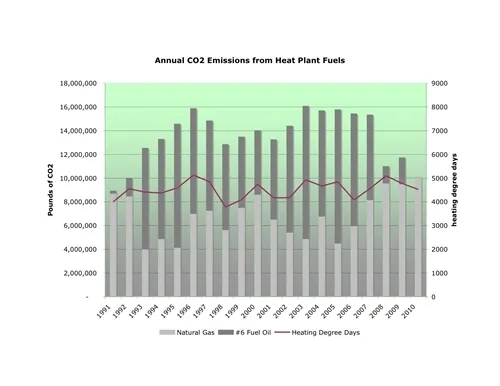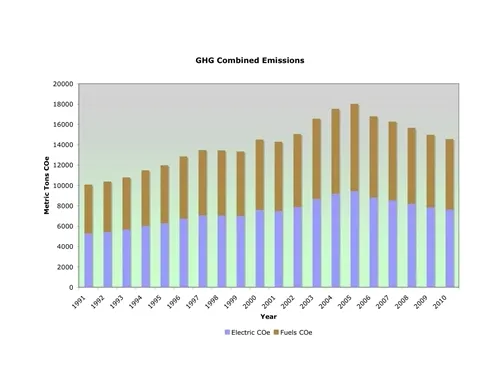Alumni Weekend Talk 2011

I'll begin where I ended last year. "What if it's a big hoax and we create a better world for nothing". Make no mistake the nay-sayers are still out there. I was at a recent Pennsylvania Environmental Resource consortium where I heard Professor Don Brown of Penn State University bemoan the fact that more progress toward carbon reduction has not been made, and that the disinformation campaign is as strong as ever. Don is no slouch in this sphere. He was part of President Clinton's environmental advisory council and serves as Associate Professor of Environmental Ethics, Science, and Law at Penn State. He's felt the force of the climate change deniers. In truth it is simple to poke holes in the evidence of climate science. So much of the data is so thin in the span of human record keeping that it is easy to discount what we see happening today as a statistical blip. The questions are why should we care and how will we benefiting the world even if the projected outcome is not entirely correct.
A model for sustainablilty that many are familiar with are the Three Pillars of Sustainability.
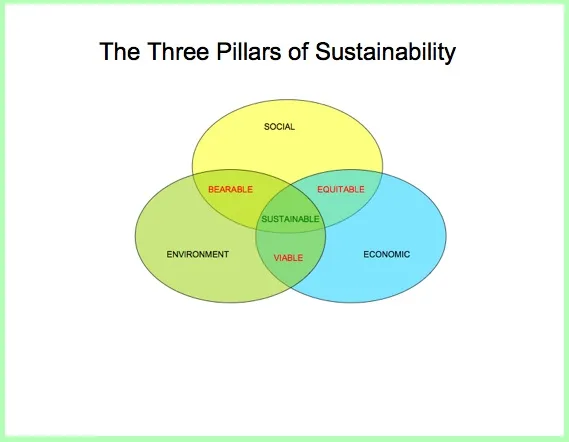
It looks wonderful and its nicely balanced, but it's not reality. The first challenge is the assumption that there is a magical sweet spot between the three circles. The reality is the environment doesn't need us at all. All that nature provides is a space in the food chain. Survive and nature has a place for you. Perish and something else will take your place. The second circle, economic, has a disproportionate effect on the remaining two. A large part of the human experience is commerce and the truth is, economic interests more often than not trump social and environmental concerns. The environment is generally the loser and by extension the social impacts can be harsh. The effects of commerce are obvious when we're tearing off mountain tops to get at the coal or when sensitive wet lands get flooded with oil. It's not so obvious in the atmosphere, but it is clear that something is happening. It was predicted through computer modeling that as the atmosphere built up with green house gases and oceans warmed we would see more weather extremes, we would see more climate shifts and we would see more glacier melt and exhaustion of water sources. All that is in fact happening. So, we should re-examine the model as a series of Overlaps with the understanding that:
- The Environment and resources within that environment are finite
- Society's demands for resources are virtually infinite
- Business has a voracious appetite to make money, many times with little regard to the outcome to the environment or social interests.
A good recent example of that last item is the city of Ordos in China. It was built on speculation and coal money and sits virtually empty. We can't pick on China in that regard as you can go anywhere in the world and find empty buildings. The point is, it was built for no particular reason other than someone saw an opportunity to make money.
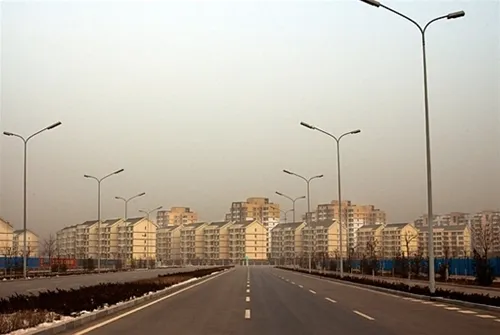
The downside of being human is we can exist in horrible conditions, we can reproduce in horrible conditions. The fact that we are here at all has proven that. Ice age, plague, war, we're still here. What is being tested now is not human resilience. It is the planet's ability to absorb the human population growth and our ability to recognize the implications of that population growth on a pretty thin layer of the planet's surface. If you look at projected population levels it's sobering to recognize that up until the 1800's the human population bumped along at a fairly sparse 1 billion people or so. Two hundred and ten years later that number is nearly 7 billion. Some projections have that population growing to 10 billion in the next thirty years: a 43% jump. The classic method of assuring survival is to pick up and move away from whatever is threatening you or make war on your neighbors to get the resources you need. Both are non-starters in the geo-political climate of today.
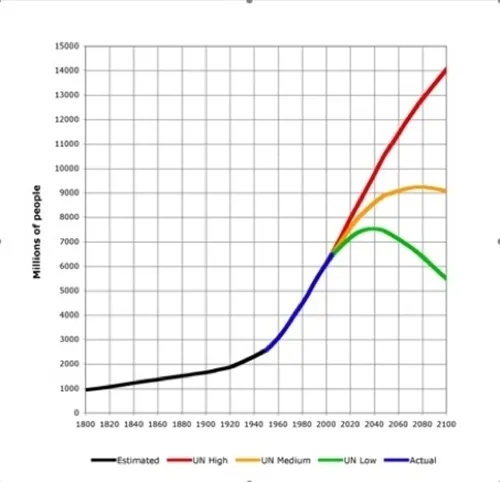
Charles David Keeling was the first to observe that CO2 concentrations were rising in the atmosphere. In 1958 he built and set up the instruments that have measured the increases.
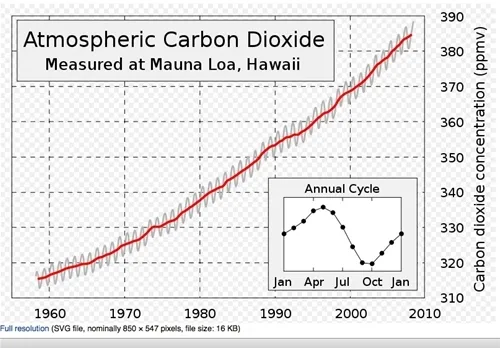
The zig zag flucuations are seasonal variations. The northern and southern temperate zones have growing seasons during which they slowly absorb carbon, releasing some of it over the winter. It's almost as if the earth itself is breathing. With continuous measurements since 1958, Dr. Keeling was able to link that increase with a rough match to the amount of fossil fuels burned per year. No matter where you stand on climate change you would have to agree that comparing the population curve against the fossil fuel curves it looks more than a little plausible that the increase in carbon dioxide levels is linked to human activity.
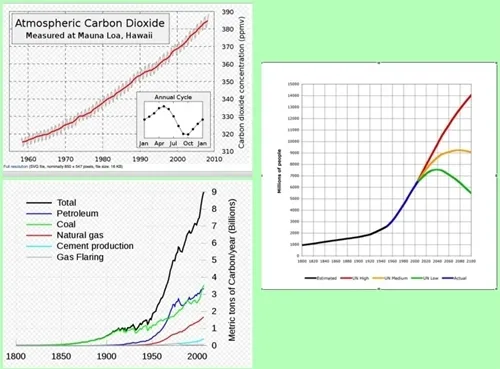
When you look at the potential impact of another 40% increase in the human population the implications are alarming. It is inconceivable that everyone in the world will be able to live at a first world standard, including the first world, at the present rate of consumption. There has to be local action with a world view toward curbing our appetite for hydrocarbons. It boils down to making individual decisions about what we consume. Energy was seemingly cheap and plentiful for decades. Now we see that it was in fact neither. It was a delayed billing. Carbon reduction is one thing that everyone in this room can act upon which will have a cumulative impact on global carbon emissions.
Swarthmore College, as a corporate entity, has made the decision to act upon carbon reduction. The first step was to form a committee to take on the issue. That sustainability committee is now entering it's fourth year. and last fall was elevated from ad hoc status to a standing committee. President Chopp, on the recommendation of that committee, signed the American College and Universities President's Climate Commitment in the spring of 2010. That signing put a timeline on a couple of things.
- We had to finish and submit a Greenhouse Gas Emissions Inventory
- We had to set specific goals for reduction targets.
This past year we have accomplished two very important goals. We have completed the Emissions inventory and set two goals for carbon reduction. Our short term goal for 2020 is an overall reduction of 20% from 2005 levels. Our long range goal is to be carbon neutral by 2050.
The process of gathering and entering the data for the emissions inventory was difficult. In fact we were unable to complete some aspects of it. Tier three emissions is data related to but not directly under the control of the college. Accounting for travel for all of the College constituencies is virtually impossible. Without a travel office it is entirely dependent upon self reporting and there are great variations between the mode of travel and distance. However, one thing really stood out when the available data we could gather was graphed; our 800 lb. gorilla in terms of carbon emissions is our physical plant, the buildings that make up what we know as Swarthmore College.
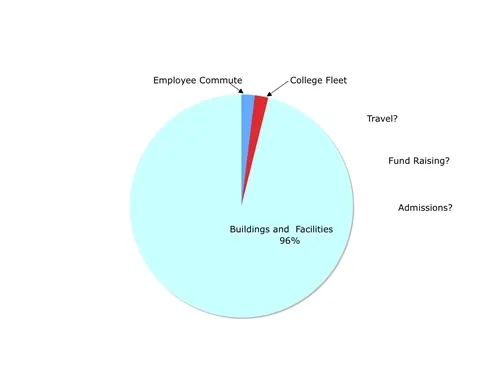
Most of the energy we use comes through the heat plant. We have the ability to burn Natural Gas or #6 oil. Natural Gas is clear, odorless and regarded as a clean fuel. You wouldn't know it was in the room if utilities didn't add t-butyl mercaptan or some other odorant. Clean as it appears to be it has a carbon content. #6 fuel is a different beast altogether. You just look at it and you think "that's nasty" and in fact it is a much more polluting fuel than Natural Gas. It's sticky, smelly, about the consistency of molasses at room temperature and these days twice the price of natural gas when compared on a Btu basis.
When we charted the use of fuels over the past twenty years what really jumps out is in the years when we burned substantial amounts of #6 fuel, the carbon equivalent tonnage went way up. We use the term carbon equivalent to acknowledge that combustion gases contain a variety of gas compounds, not just carbon dioxide, all of which contribute to greenhouse gas emissions.
The second part of our carbon contribution is electricity. A substantial amount of electricity continues to be produced from coal fired plants; 46% in fact. Pennsylvania is a net exporter of electricity so there is no mistaking the bill boards north and west of here extolling the virtues of the coal industry. Coal plants are not going to close any time soon. We have to acknowledge that producing the power, for the college to use, is a source of carbon emissions for the College and account for it accordingly. When we combined the direct emissions from the Heat Plant with the calculated emissions load from our use of electricity, our Green House Gas emissions for 2010 totaled 14,588 Metric tons. That figure represents a 19% drop from our 2005 level. We are essentially at our 2020 goal and feel we will improve upon that number going forward.
However, that leads to the larger question about how we achieve our ultimate goal of neutrality. Conservation has limits. We won't stop using energy and energy conservation won't drive the academic program. One strategy likely to be included is carbon offsets. The College has purchased Renewable Energy Credits in the form of wind power since 1999 with gradual increases in our comittment as the years progressed. Three years ago that level was raised to 40% of our kilowatt hour total, it was increased to 50% in January 2011 to continue to be counted in the EPA Green Power Leadership Club and in June of 2011 (taking advantage of market conditions) we increased our purchase to offset nearly 100% of our kWh use. At a minimum that offsets 6,403 metric tons of CO2. Carbon offsets are actual the most easily achieved part of sustainability, but it is a market with a ceiling on how much of the product is available and it is a premium charge over the price of the product.
To achieve even conservation efforts will require cooperation. Sustainability, above all else, is a community effort. We joined with Swarthmore Borough to being recognized as a Green Power Community , but it's important that we engage our own College community to the maximum extent possible. We issued a joint statement with the Crum Woods Stewardship Committee with a request to establish a Sustainability Director, an effort that was also endorsed by a number of departments and faculty. The purpose would be to:
- Focus student groups
- Coordinate communications about Suscom
- Lead the Climate Action Planning effort
- Engage with other institutions across the state and nationally
We are a member institution of AASHE - Association for the Advancement of Sustainability in Higher Education and this spring completed our first STARS Report. STARS is an offshoot of AASHE and stands for "Sustainability Tracking and Rating System". It is new and represents a reflexive action against the multitude of rating agencies (Sierra Club, Princeton Review, Sustainable Endowments Institute, etc.). We've rejected the cookie cutter reports which in our view rendered apples to oranges comparisons between institutions. STARS is a report tool whereby we can measure our progress on the broader sustainability issues of water, land use, construction and waste handling. Gathering the information to complete this first report was an exercise involving faculty, Students and Administration to compile the information. It was truly a community effort.
We were also the beneficiaries this past spring of the generosity of Dean Allen, CEO of the west coast firm McKinstry , who sent a team to analyze our efforts to date and provide a short report of suggested actions. The maintenance department has entered the ACT 129 program offered by PECO which offers incentives to reduce electric use by taking advantage of advances in lighting and control technologies. We are busy. In closing I'll go back to where I started. . "What if it's a big hoax and we create a better world for nothing"? The answer is, it will be time well spent.
